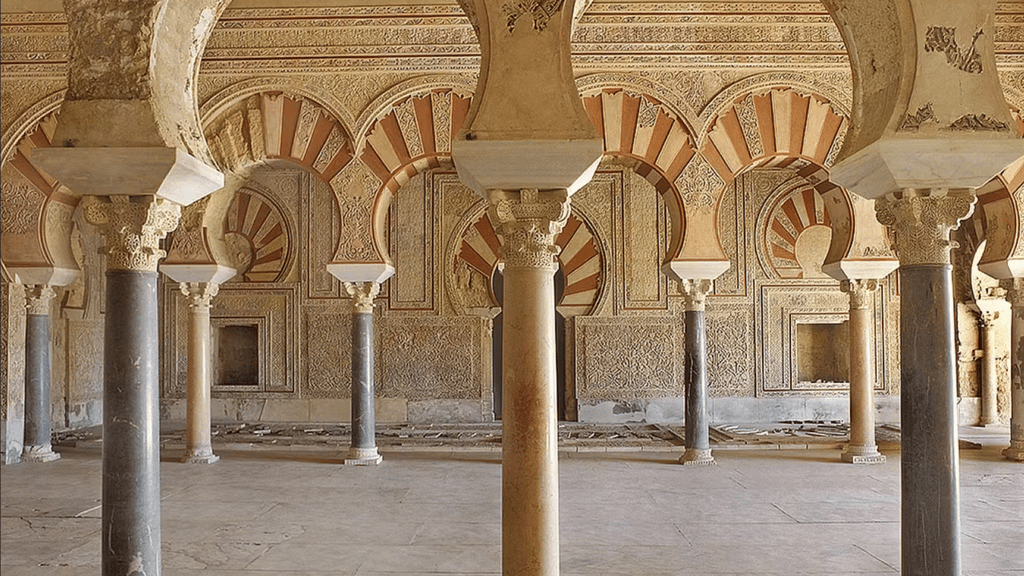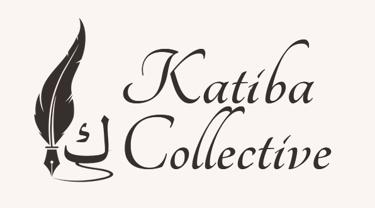UPCOMING SEMINAR: The Wife's Compass (See here)

The Margins She Ruled
Where duty became legacy, and mastery became influence.


Córdoba, 10th century CE
The sun rose slowly over Madinat al-Zahra, brushing its golden fingers across gardens thick with jasmine and stone courtyards whispering secrets in Arabic and Latin. Beneath the tiled domes and cedar ceilings of the Umayyad court, words moved faster than soldiers, and knowledge, not conquest, was the prize most cherished.
And among its quiet custodians, under the arches of Andalusian stone and the hum of recited verse, was a woman with ink on her fingers and numbers on her tongue.
Lubna of Córdoba.
Scribe. Scholar. Secretary to kings.
And, some say, born a slave.
In the palace corridors, she learned to count by the carved veining in alabaster bowls, inventing math problems based on the symmetry of seeded pomegranates laid before her. She memorised times‑tables by reciting them into the courtyard breeze, the chant drifting between orange trees and scholarly echoes.
Soon, they began to call her the mathematician of the palace, the mind behind the margins, the keeper of books in the greatest library of her time; the Royal Library of Córdoba, where over 400,000 volumes whispered histories of empires, revolutions of thought, and the names of those long vanished. But those titles were far too small.
Because she did not just manage books.
She preserved civilizations.
Every manuscript copied by her hand was clearer.
Every text she touched was sharper.
While others inherited thrones, Lubna earned her legacy line by line.
Her first post in the king’s court was as secretary to Caliph ʿAbd al-Rahman III and then to his son - men descended from the very founders of Andalus. But she was no mere record keeper. Her hands did not just copy. They corrected. Translated. Annotated. She worked on the texts of Archimedes and Euclid, and when the logic faltered or the translations stumbled, she restored clarity without fanfare.
Her work took her east, they say, to Cairo’s candlelit study rooms, Damascus’s bustling bazaars of books, and Baghdad’s soaring libraries where scrolls unrolled like rivers. But when she stayed in Córdoba, the world came to her instead: books crossed deserts and seas to land on her desk, waiting for her eyes before they could speak again. In the palace, crates were opened with reverence, parchment smelled of sand and oil, and pages sighed as she opened them.
She walked through the streets of Córdoba without guards, but with gravity. Children would stop her on the roads, and she would teach them multiplication tables, set riddles of logic for them to solve before sunset. Because knowledge wasn’t meant to be kept, not even by those at the highest post. It was meant to be scattered, like seeds before spring: unseen at first, but certain to bloom.
She wrote poetry too; not for acclaim, but because her heart moved in meter. Elegant. Grammatical. Precise. Her verses held the quiet pulse of a woman who saw the world in both equations and elegy.
When she entered the council chamber, voices dropped - not out of fear, but reverence.
They would whisper between themselves:
“She moves like a light no one else can reach.”
“She weaves words with unmatched grace,
grammar, poetry, mathematics,
all held in a quiet nobility no one else in the palace could claim.”
Not many know her name now. But when you read from what Córdoba preserved - the Greek sciences, the Arabic treatises, the philosophy that shaped centuries - you are, perhaps unknowingly, reading through her eyes.
She did not rule an empire.
She ruled the margins of empires... quite literally.
In the palace’s towering volumes, her handwriting lived in the edges: clarifying, correcting, completing. She calculated in margins, annotated in margins, even moved through court life at the edges; never centre stage, yet central to everything.
And somehow, by mastering the margins, she shaped the entire meaning.
And still, she walked the streets of Córdoba,
pausing to teach children their sums
even as the most powerful men in the caliphate waited on her pen.
She never chased recognition.
She simply mastered her craft; early mornings immersed in manuscripts, lamps burning late into the night, steady hands that never trembled until every page was clear.
Until the quiet girl with ink‑stained fingers and pigtails wandering the halls amidst the maids…
became the woman scholars whispered about in the king’s court.
Lubna of Córdoba never asked to be remembered.
She simply tended to the memory of the world.
She didn’t seek to outshine the men around her.
She simply outlasted them,
in the margins, in the manuscripts,
in the minds she shaped through Cordoba’s streets.
Some women lead by taking the stage.
She led by putting her head down and doing her duty,
until her silence echoed louder than applause.
When her lamp finally burned low,
the world’s libraries shimmered with the fire she’d kindled,
in manuscripts preserved,
in knowledge still studied,
in futures shaped not by fame,
but by the quiet yet absolute mastery of a woman who simply did the work.
What will you master - quietly, completely - until your silent mastery speaks for you?
Download Your Reflection Journal
Take a quiet moment to reflect on the legacy of Lubna of Córdoba, scribe, scholar, and the silent force behind one of history’s greatest libraries, and explore what you are mastering behind the scenes.
What’s inside:
A reflective Worksheet with thoughtful prompts on quiet influence, excellence, and legacy
A beautifully designed Poster to print and keep as a reminder that not all leadership needs a stage
Perfect for:
Women, girls, educators, and anyone walking a quiet path — doing the work, shaping the world, one unseen page at a time.
The halls of Madinat al-Zahra palace where Lubna once wandered as a quiet child, and later walked with purpose, ink-stained and indispensable, as the court scribe of a caliph.
Disclaimer: Traces of Her offers a creative interpretation of the lives of Muslim women from the past. Since many aspects of their daily lives are not fully documented, much of the series is based on imagination, inspired by common human experiences, and informed by historical context. The visual depictions and scenarios aim to provide a relatable and engaging setting, helping modern readers connect with and understand our rich heritage. While the scenes are not necessarily historically accurate, they are designed to evoke the essence of what life may have been like, offering a glimpse into the past through the lens of storytelling.
